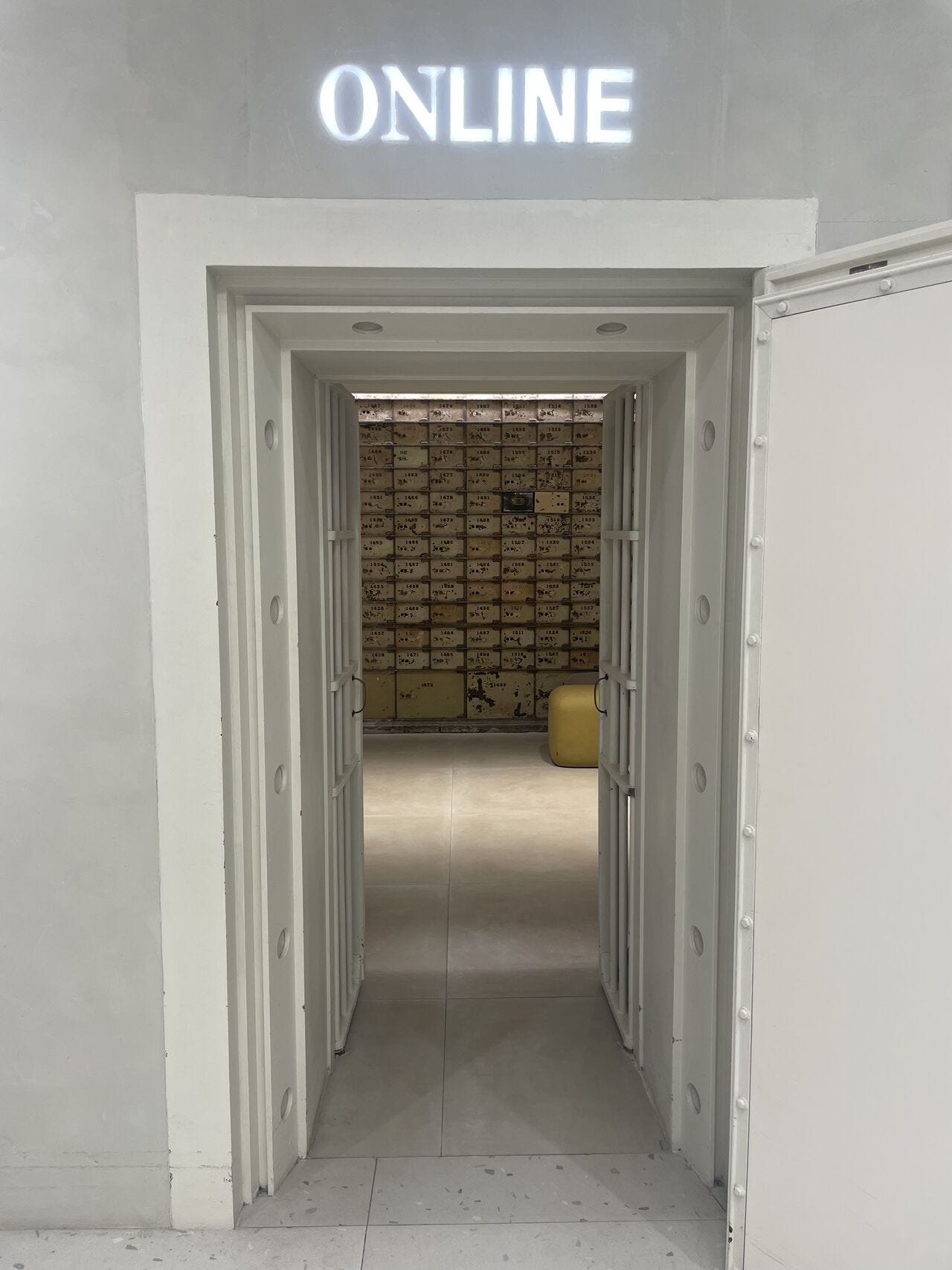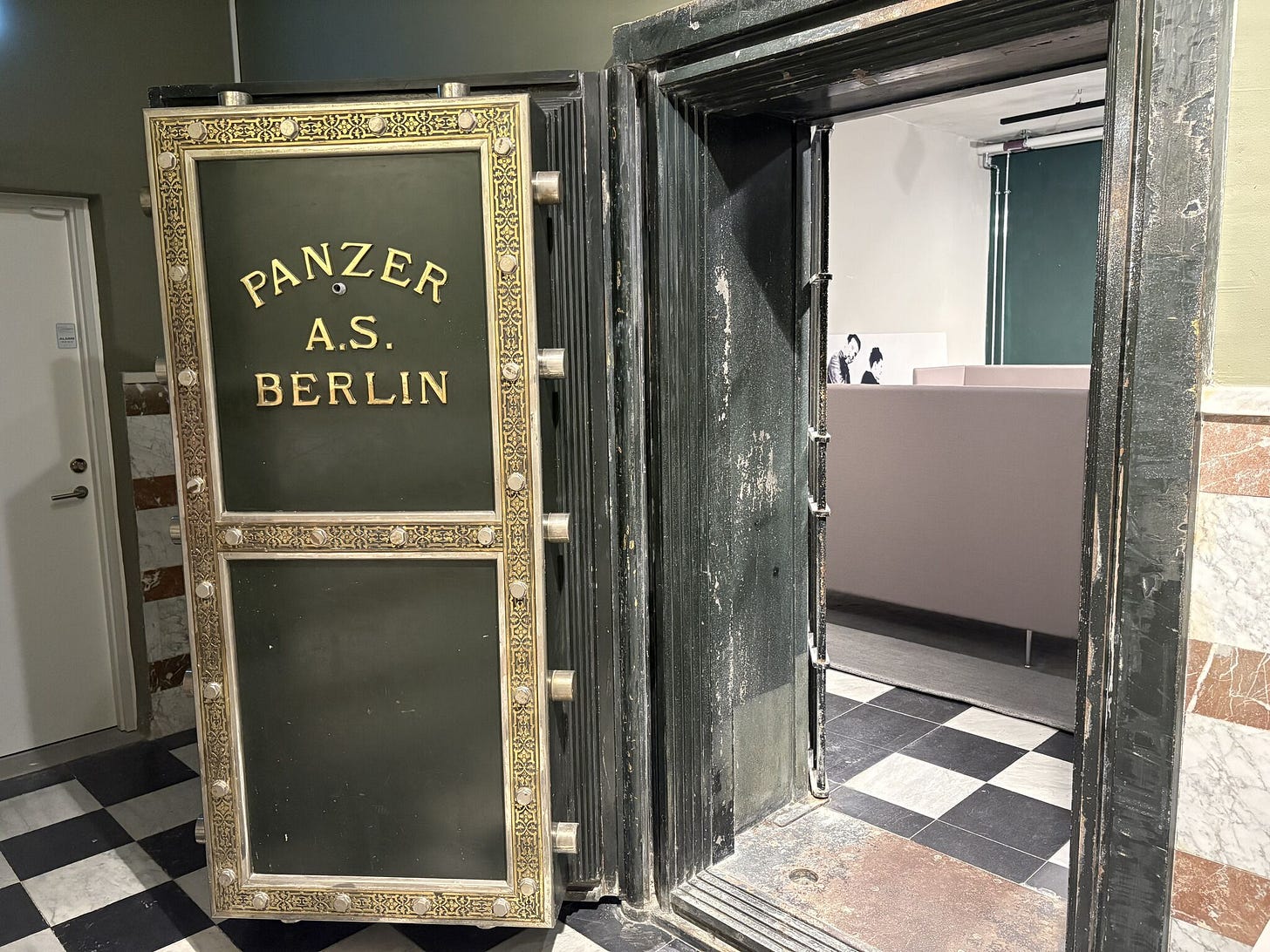Why heritage architecture can help retail be memorable
And being memorable is a major competitive advantage.
Whenever I’m travelling for projects, I love it when I find a store where the retailer is working with the history of the building rather than erasing it.
Yes, it’s partly because working with and preserving our past has civic benefits. But it’s also because there’s a key business benefit that I’m amazed so many people overlook.
In Copenhagen, furniture business Paustian Design Est. 1964 is based in a former bank.
It’s a similar story in Barcelona where fashion brand Stradivarius’ flagship store is in the former headquarters of the Central Bank of Barcelona.
One of the best examples of retaining historic architecture is Starbucks’ Ninenzaka store in the Higashiyama area of Kyoto. A converted traditional machiya townhouse, the store does such a good job of blending in with the local culture that some people never realise it’s there.
Even Wetherspoons - the Marmite of the UK pub scene - understands the power of a heritage building, opening up in former banks, theatres, cinemas, magistrate courts, and even a car factory.
Why? Because it’s memorable.
The importance of being memorable
People point to a lot of different things when talking about customer loyalty - habit, preference, service. But they rarely seem to talk about the importance of being memorable.
I don’t need to hunt out a load of stats to prove this to you. You know this because you are a human being who is alive in this world and if asked could talk about the most memorable people you’ve met, places you’ve been, things you’ve eaten, experiences you’ve had.
And given that you’re probably reading this because you’re interested in retail, you could also tell me the most memorable stores you’ve been in or ad campaigns you’ve seen.
As I’ve talked about before, brands and retailers are operating in a world that’s more competitive than ever. It’s a struggle to get a customer’s attention.
Being memorable is a major competitive advantage.
Of course, there are lots of things that can make something memorable. You can be memorable for all the wrong reasons.
But two major contributors are a strong emotional element and the element of surprise.
Think back to the most memorable Christmas present you ever received. It’s likely that it was either something you really wanted - that you had an emotional connection to - or a surprise that resonated. It might even have been a jackpot combination of the two - something you desperately wanted but never expected to get.
Oddly enough, stores that leverage their heritage architecture often tap into those same two drivers of memorability.
Helping, not hindering creativity
From some corners, there’s this idea that heritage buildings hinder creativity. They might come with rules around what you can and can’t do, what can be changed, what needs to be preserved.
Or they might simply be buildings with a past that retailers don’t feel fits their retail offering. So they have to remake and remodel it into a blank canvas for their own image.
But it’s the opposite that’s true. It’s widely agreed that creativity often comes from constraints, simply because it forces you to look beyond the obvious. You have to think differently, to be a bit more unconventional and innovative in your approach.
For example, both Paustian Design Est. 1964 and Stradivarius have used the original bank vaults in their spaces in creative ways. Paustian Design Est. 1964 has turned them into mini showrooms, while Stradivarius has put its online pick-up and returns services into the former vault.
And it’s this creativity that makes these stores memorable.
Consumers are primed to know what to expect from the average store. So it’s unexpected when they find the online collection point is in an old bank vault. And they’re a little bit wowed by what they see - they feel a bit of emotion about an activity that is usually mundane or repetitive.
Humanity also attracts humanity. Every day we coexist with our history as humans, and buildings with a visible past reminds us of that. They remind us that we’re walking where others walked and that creates an emotional response somewhere within.
It’s why you can look down through a glass floor in a Zara in Athens and see the ruins of an ancient Roman tomb. It’s why you can eat a Big Mac in McDonald’s in Roma Termini station next to the remains of an ancient Roman wall. It’s why a Lidl in Dublin lets you look down on 11th century Irish-Viking ruins while you buy baked beans.
Because on the face of it, there may not be an obvious measurable benefit to working with the history of a building - no KPI or ROI tick box. But there is real power in being memorable.
If you’re interested in seeing this idea IRL, join our retail safari at Shoptalk in Barcelona on Monday 2nd June. Places are free - but very limited - so sign-up now.








Absolutely agree with your insights - the physical space can make the experience memorable and incorporating in heritage elements from the space is a great way to do this!